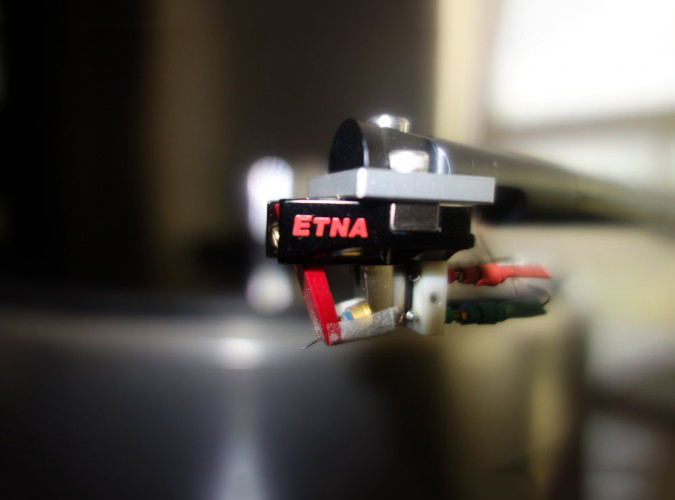Products
Lyra Etna Moving Coil Phono Cartridge
Our price: £6,895.00
Lyra Etna MC Phono Cartridge – To get the best from your vinyl then you need a really good cartridge, you could argue it is the most important part of your Vinyl setup and when it comes to Moving Coil Cartridges Lyra are up there with the best. Lyra’s cartridges are built 100% from the ground up in Japan with the artisanal craftsmanship that Japan is known for, their mission is to create long lasting products that combine original thinking, advanced engineering, and ideal materials to ensure maximum immersion and emotional involvement in the music so please come into HFL to experience for yourself how Lyra can enhance your Vinyl Collection.
It is always a challenge to design a worthy heir to a successful product. For the Lyra Etna, however, that challenge was twice as difficult as normal. On one hand its primary goal was to replace the popular Titan. On the other hand, the Etna design project had a second goal, which was to achieve as high levels of performance as possible. If this meant that Etna would give stern competition to the flagship Atlas, so be it.
As a model intended to retail for significantly less than Atlas, but having similar aspirations to the pinnacles of performance, Etna was designed with a strong emphasis on engineering efficiency, so that its performance would be as far beyond the sum of its parts as possible. For this reason, although it shares some of its design philosophy with the Atlas, the concepts are executed rather differently.
It is always a challenge to design a worthy heir to a successful product. For the Lyra Etna, however, that challenge was twice as difficult as normal. On one hand its primary goal was to replace the popular Titan. On the other hand, the Etna design project had a second goal, which was to achieve as high levels of performance as possible. If this meant that Etna would give stern competition to the flagship Atlas, so be it.
As a model intended to retail for significantly less than Atlas, but having similar aspirations to the pinnacles of performance, Etna was designed with a strong emphasis on engineering efficiency, so that its performance would be as far beyond the sum of its parts as possible. For this reason, although it shares some of its design philosophy with the Atlas, the concepts are executed rather differently.
Etna employs a solid titanium core structure machined with non-parallel surfaces to inhibit internal reflections wherever possible, but unlike Atlas (and Titan i before it), this is mated to a slightly undersized, asymmetric duralumin outer body that is designed to lock over the core like a very tightly-fitting jigsaw puzzle. The core and body are augmented with bronze and stainless-steel resonance control rods, then everything is pressure-fit together into a pre-stressed, solid, void-free structure which is comprised of multiple materials and complex internal shapes. The constrained-layer nature of this construction dramatically reduces the resonant signature of each material and creates a far more neutral-sounding body structure than otherwise possible, while the high body stiffness benefits transients, dynamics and resolution.
Linear transducers such as loudspeakers and phono cartridges are inherently inefficient devices – on the order of 5 to 10%. In other words, of the vibrational energy that enters a cartridge from the LP groove, only 5 to 10% will be converted into electrical signal. The cartridge’s internal damping system will dissipate some of the remaining 90 to 95%, but much of the excess vibrational energy will reflect inside the cartridge, creating internal echoes, smearing, and a general diminishing of fidelity. It is easy to demonstrate this with many cartridges – play a highly modulated LP with the power amp turned off, and bring your ear close to the cartridge. The “needle-talk” that you hear is excess vibrational energy which isn’t being controlled properly.
To help conduct this excess vibrational energy into the headshell, where it can be safely dissipated within the greater mass of the tonearm and turntable plinth, Lyra has traditionally mounted the cantilever directly into the cartridge body, resulting in a rigid, seamless connection between the cantilever assembly and tonearm headshell (as it happens, we remain the only manufacturer to do so).
In the process of designing Atlas, we discovered that in addition to coupling the cantilever to headshell with a rigid, unbroken path, further sonic gains could be realized by removing all objects and voids from the path. Atlas’ asymmetric shape was conceived partly for this purpose, to move the front magnet carrier, mounting screw and screwhole out of the way of the mechanical path connecting cantilever to headshell.
Etna utilizes the same asymmetrical concept, but whereas Atlas offsets the screw and screwhole to one side, Etna moves the screw / screwhole all the way to the front of the cartridge – and interposes an additional bronze damping barrier between the screw / screwhole and the mechanical path linking cantilever to headshell.





Reviews
There are no reviews yet.